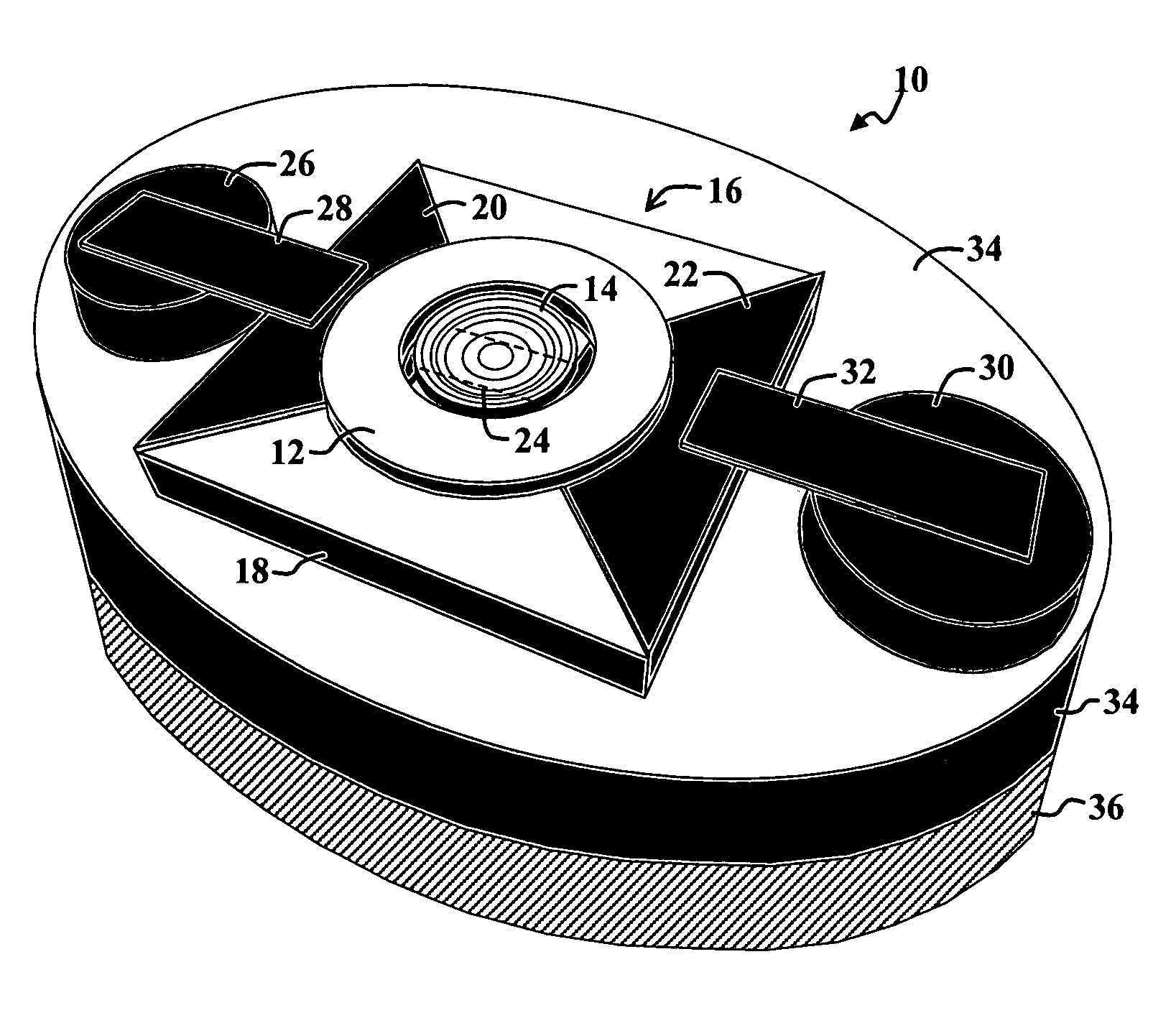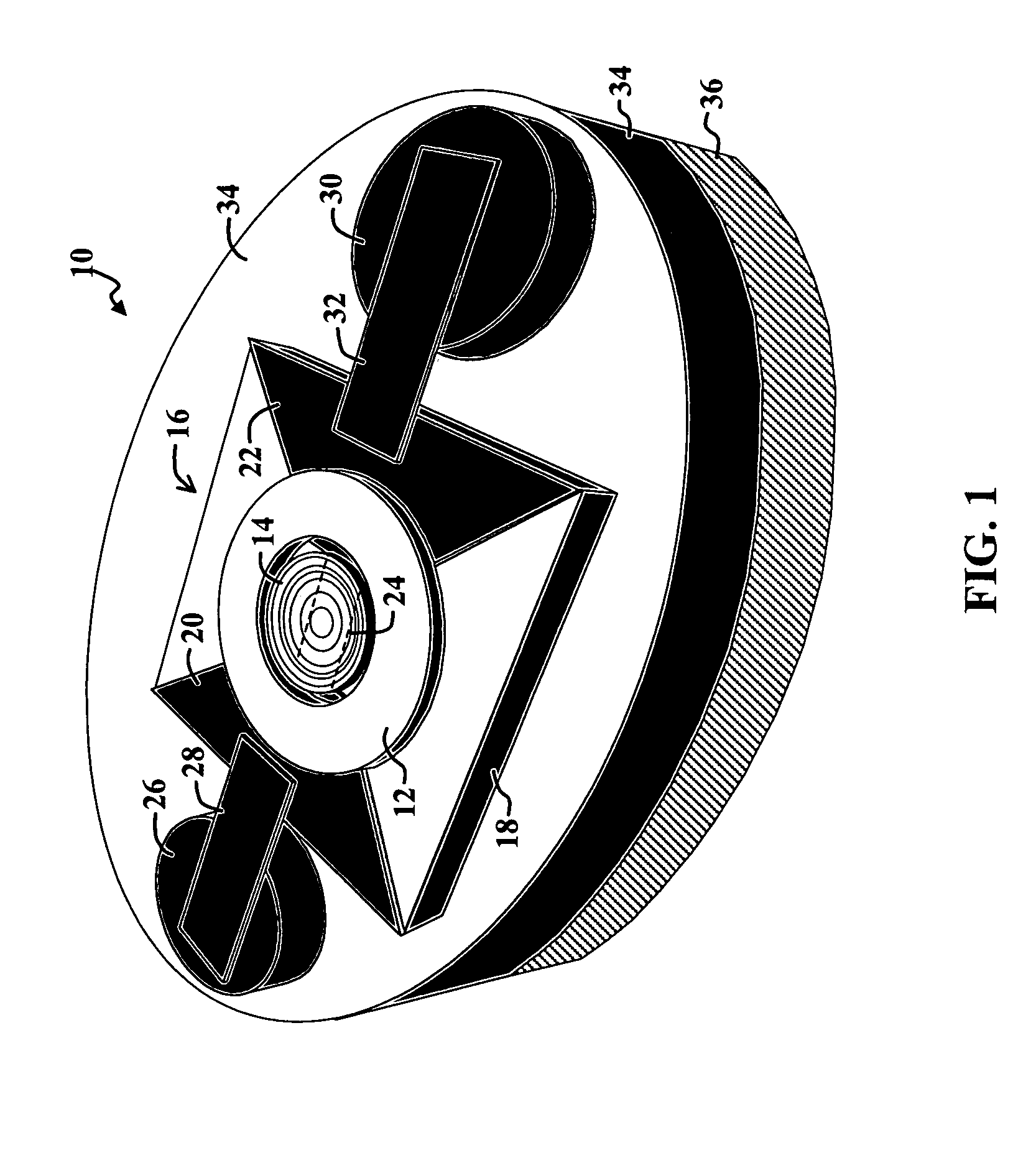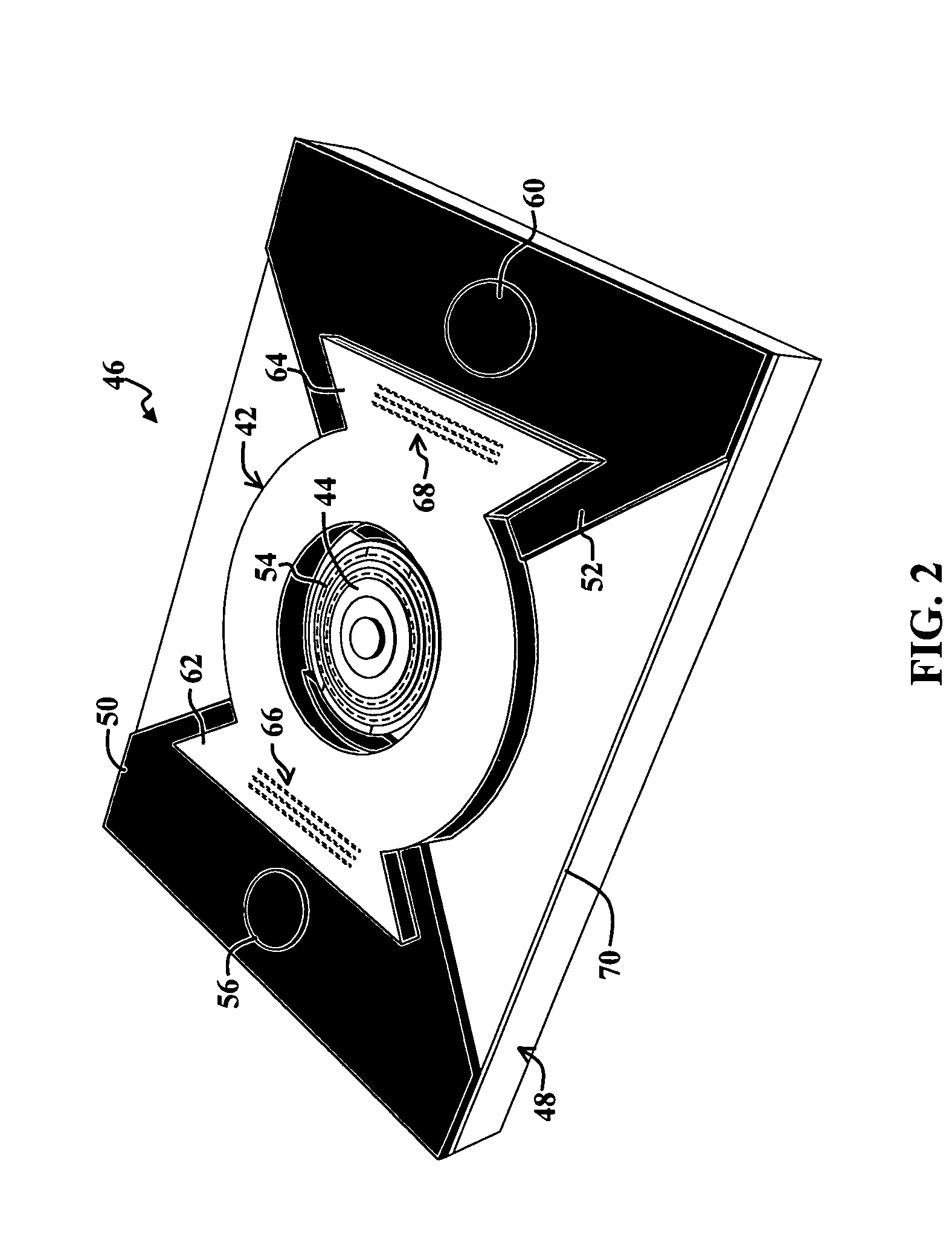Efficient exploding foil initiator and process for making same
a foil initiator and exploding technology, applied in the field of actuators, can solve the problems of reducing efi efficiency, reliability, longevity, inefficient and expensive, inconvenient production, etc., and achieves the effects of reducing energy requirements, facilitating mass production, and increasing efi reliability
- Summary
- Abstract
- Description
- Claims
- Application Information
AI Technical Summary
Benefits of technology
Problems solved by technology
Method used
Image
Examples
first embodiment
[0032]FIG. 1 is a diagram of an Exploding Foil Initiator (EFI) 10 which employs a lithographically formed barrel 12 and concave flyer 14 disposed on a flyer assembly 16. For the purposes of the present discussion, an EFI may be any initiator that uses a bridge or exploding foil, also called an expanding foil, to generate kinetic energy or to otherwise launch a projectile, such as a flyer, to initiate an action. While various flyer shapes are discussed herein, including concave, convex, and star-shaped flyers, such examples are not intended to be limiting. For example, the concave flyer 14 may be replaced with a substantially flat or square flyer without departing from the scope of the present teachings.
[0033]The flyer assembly 16 includes a first substrate 18 upon which is disposed a first electrode 20 and a second electrode 22, which are also called lands. The first electrode 20 and second electrode 22 are electrically coupled via a bridge 24, the boundaries of which are shown via...
second embodiment
[0053]FIG. 2 is a diagram of an EFI assembly 46 which includes a lithographically formed convex flier 44 and includes contact pins 56, 60 that directly contact lands 50, 52 of the EFI assembly 46.
[0054]The construction and operation of the EFI assembly 46 are similar to the construction and operation of the EFI assembly 16 of FIG. 1 with various exceptions. In particular, the substrate 18 of the EFI assembly 16 of FIG. 1 is replaced with a PCB substrate 48 in the EFI assembly 46 of FIG. 2. In addition, the barrel 12 of FIG. 1 is replaced with a tabbed barrel 42 in FIG. 2, which has a first tab 62 and a second tab 64 extending therefrom. Furthermore, the first pin 26 and second pin 30 of FIG. 1 are replaced with a third pin 56 a fourth pin 60 in FIG. 2, respectively. The pins 56, 60 directly contact a third land 50 and a fourth land 52, respectively, and extend through the substrate 48 to a fireset, which is not shown in FIG. 2. In addition, the concave flyer 14 of FIG. 1 is replace...
third embodiment
[0075]FIG. 3 is a diagram of an EFI assembly 76 which includes a lithographically formed strategically perforated flyer 74 with contact pins 56, 60 that directly contact the lands 50, 52 of the EFI assembly 76.
[0076]The construction and operation of the EFI assembly 76 are similar to the construction and operation of the EFI assembly 46 of FIG. 2 with various exceptions. In particular, the convex flyer 44 of FIG. 2 is replaced with the strategically perforated flyer 74 in FIG. 3. Furthermore, the ring-shaped bridge 54 of FIG. 2 is replaced with a rectangular bridge 84 in FIG. 3
[0077]The strategically perforated flyer 74 includes a first set of perforations 78, which are approximately centered on the perforated flyer 74. Several sets of smaller perforations 80 are positioned near the outer edges of the perforated flyer 74. The exact placement of the perforations 78, 80 may be altered, and different shapes, sizes, and arrangements of perforations may be altered without departing from...
PUM
 Login to View More
Login to View More Abstract
Description
Claims
Application Information
 Login to View More
Login to View More - R&D
- Intellectual Property
- Life Sciences
- Materials
- Tech Scout
- Unparalleled Data Quality
- Higher Quality Content
- 60% Fewer Hallucinations
Browse by: Latest US Patents, China's latest patents, Technical Efficacy Thesaurus, Application Domain, Technology Topic, Popular Technical Reports.
© 2025 PatSnap. All rights reserved.Legal|Privacy policy|Modern Slavery Act Transparency Statement|Sitemap|About US| Contact US: help@patsnap.com



